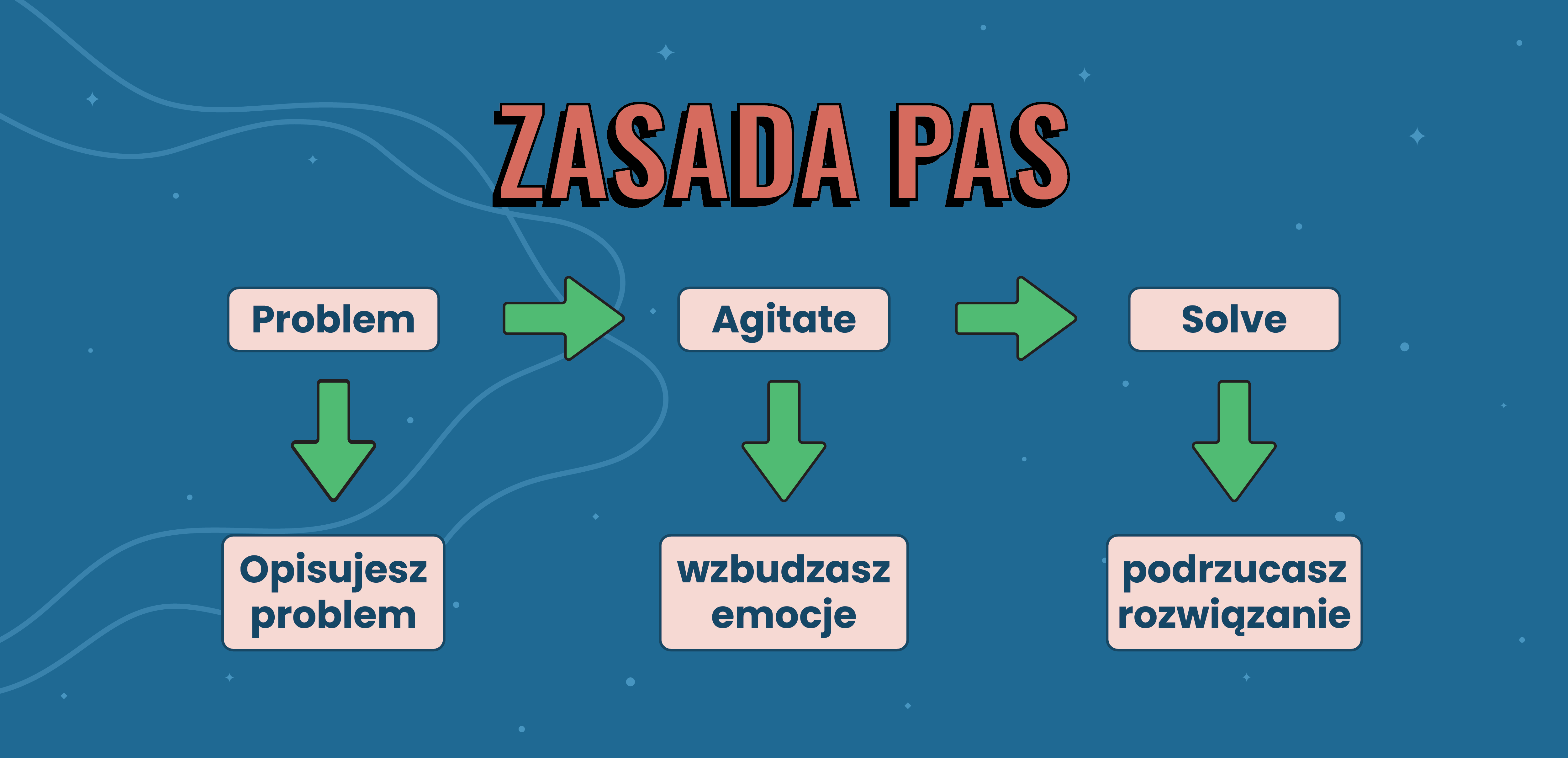Social media is a powerhouse. It sounds like a cliché, but it’s a fact. Imagine that Facebook is used daily by ¼ of the world – more than two billion people scroll their boards in search of news, memes and photos of friends. And that’s just one platform. After all, there are also Twitter, Instagram, TikTok, YouTube and LinkedIn – powerful tools that are worth using not only privately, but also to promote companies. Corporations and large companies don’t need to be told this, while smaller ones are becoming more and more convinced that being active in SM makes sense. Here the questions always arise: What to publish? Do it yourself or outsource it to someone experienced? And the one that interests us the most today – how to write to reach your audience?.
I can write with full confidence that social media copywriting is crucial today. Just think about how you behave when you are the one scrolling through the feed of, for example, Facebook. You take a look, read the first sentence and, if you don’t find anything interesting or intriguing, you move your finger further. That’s why this first sentence is so important -written by Remigiusz Mróz, author of at least 52 books, including many bestsellers, among others..
Copywriting in social media is supposed to grab the attention of the viewer and make him or her want to linger over a particular post. A post thrown in by a company to announce a new product and to sell it, telling a story that is important from the brand’s point of view, funny but referring to the course being promoted, or directing social attention to an important issue. .
If you’re not feeling it yet, let’s put it bluntly: the combination of marketing – social media – copywriting must exist and function as well as possible.It would be foolish not to use social networks, when you can reach millions this way. But it won’t work without good content. .
And this is where copywriting – all in white – enters the scene. 😉
.
The first thing to understand is that social media copywriting is not universal. That is you shouldn’t publish the same posts simultaneously on Facebook, Twitter, LinkedIn and Instagram. Besides, in many cases it can’t even be done, because different channels have different content length requirements. Yes, you can use identical graphics – as long as their dimensions are tailored to the specific site – but not text. .
Copywriting on Facebook, Instagram, Twitter and LinkedIn
.
On each of these channels, audiences expect something slightly different. .
The greatest freedom is given to Facebook, because here not only can the posts be long, but you reach people of all ages and with very different interests. However, Instagram is already a space that tends to bring together younger users – 70 percent of Instagram users are under 35. Keep this in mind when designing content for this platform. Besides, Instagram is an acceptable smaller number of characters in a post, and there are also hashtags. We will come back to this last topic. .
What about other social media? Here the opposite is true for Instagram. 23 percent of teens say they don’t use Twitter at all in 2022. This group tends to focus on TikTok. Most Twitter users are between 25 and 34 and 35 and 46 years old. Interestingly, the platform is clearly dominated by men. They account for more than 70 percent of all users. .
Finally, there is still LinkedIn, which has a different character than the platforms mentioned so far, because it brings together professionals. Accounts are set up there by people both looking for employment and wanting to boast about their professional successes. It has more than 4 million users in Poland alone. .
Just don’t ask now, very please, why you need all this data! After all, it’s obvious.
I want to make you aware that each social media is designed for different people and thus requires a different approach. What works on Instagram is unlikely to work on Twitter, and vice versa. That’s why you need to know from the beginning where the post will be published, so you can write it not only according to the service’s guidelines, but also with your target audience in mind. .
What to do to write effective posts in SM?
.
Writing effective posts, i.e. posts that convince an audience to buy a product or go to a website, for example, can be learned. There are a few basic rules, or as copywriters say, formulas, that are worth knowing. Here I emphasize one thing – formulas are not ready-made text templates, they don’t always work, and they won’t make a text sell by itself. They are templates for creating content that you can use, knowing your target audience, brand, services, context, etc. They’re a great help, but they’re no substitute for thinking and creativity. Reach for them as inspiration. .
But to the shore, to the shore….
.
One of the principles used by copywriters and SoMe specialists is the PASrule. It’s an acronym for Problem, Agitate, Solve. You describe a problem, stir up emotion, and toss in a solution. .

Problem – can be a question or a statement. It is supposed to show that you understand the reader and identify with them, you know what they are going through..
Agitate – is supposed to arouse strong emotions, but not cause fear. This is the moment when you need to convince the recipient that they should not wait any longer to find a solution to their problem..
Solve – this is the solution you give the recipient on a platter. It is best to confirm it, for example, with reviews from satisfied customers. .
AIDA in copywriting (not opera)
.
Another rule of thumb is AIDAfrom Attention, Interest, Desire and Action or its junior counterpart IDA – Interest, Desire, Action..
Attention – this is the moment to get the attention of the recipient. This is where something intriguing, interesting, or funny can occur to make someone want to read on..
Interest – here the focus should be on keeping the reader’s interest.
Desire – this is an attempt to evoke a desire, e.g. to have some thing, to use a service, etc.
Action – a reaction that the recipient must be persuaded to make, such as going to a company’s website, ordering a product, writing a message, etc..
.
Time for one of my favorite rules..
Copywriters in social media often use the KISS – Keep It Short and Simple, which is unlikely to require an exact translation. The idea is to use as few words as possible to build a message. This technique works especially well on platforms that only allow short posts, such as Twitter. Although, in fact, I strongly believe that simple language should enter the salons in every possible way!.
By the way, do you remember what texting was like when this form of communication was just becoming popular? To convey information and emotions in 160 characters was something! This is precisely the challenge that copywriters who write according to the KISS principle face on a daily basis. It can be said that copywriters categorized as Millenials have a great practice behind them!.
Read also:How to write a sales text?.
#necessary or #unnecessary?
.
It’s time to return to previously announced hashtags.
Hashtags – or hashtags in the Polishized version – are words or phrases preceded by a # symbol called a check. The name comes TOTALLY from the English hash, the name of this sign..
But what’s the deal with hashtags? They first appeared on Twitter and back in 2007. At the time, Chris Messina published a post asking whether the use of #tags would be convenient for users, and that’s where it started. Much later, other social media outlets followed suit, including Instagram, Facebook, YouTube and TikTok. However, they did not work everywhere, as you well know..
Hashtags are meant to tag content – topics, categories, products, places, etc. Searching by hashtags is possible on Instagram, for example. Anyway, there, hashtags have become an integral part of posts. .
Why is it copywriter should keep them in mind? Because hashtags need to be written just like other texts, and they need to be skillfully matched to the content being published. Then, when you create a post, prepare hashtags for it. .
What else do you need to know about hashtags in the context of content creation?
- Hashtag is written without spaces, e.g. #poranarelaks.
- Hashtag may contain numbers, but special characters and punctuation are not allowed.
- The hashtag must always be preceded by a check mark.
- Don’t go overboard with the number of hashtags – Twitter recommends up to 2 per post, YouTube 15, and Instagram allows as many as 30
- Hashtags must be matched to the content of the post – they can’t be completely disconnected from it.
- It is advisable to create company hashtags and use them every time you publish.
- It is better to avoid the most popular hashtags. Contrary to appearances, they do not positively affect reach.
.
.
.
.
This is still not all you need to know about social media copywriting. .
If you want to create really good content, you shouldn’t just focus on one type of post. And it’s not about posting on different platforms, although that’s extremely important, then, if you plan to reach multiple audiences, but about adding diverse content wherever possible. .
Facebook, for example, allows you to:.
- insert classic posts with a single photo,
- carousels,
- publishing slideshows and albums,
- use of instant materials,
- doing live.
.
.
.
.
In fact, a copywriter can contribute to any of these formats. Yes, even in live events! After all, these, if not spontaneous but planned, may require a script, for example. In addition, the copywriter in collaboration with, for example, a graphic designer or photographer can suggest the use of different formats.
There is admittedly no universal rule of thumb as to which formats work and which are unlikely to work, as this regularly changes, but it’s not worth sticking to one option, just testing.
Why should a copywriter work with those responsible for visual content? This may sound like another obvious one, but in social media images are important, and sometimes even more important than text. Often the image attracts, while the text stops. Collaboration is necessary if you want a consistent effect. Besides, graphics also have slogans that someone has to create. And this is not a task for a graphic designer..
Read also: texts vs. reader attention, or how a copywriter should write texts!
I also asked an industry expert about effective and attractive content.
I think the most important rule anyone writing social media content should keep in mind is to write the way you would want to read. Sounds trite and trite, right? But it’s so true! We ourselves don’t like to read “Buy a pen, because it’s useful and there’s a promo” content, but often this is exactly the kind of messages we encounter in Social Media. When creating content, of course, do not forget about all the technical issues described in the text, but also remember that you are writing for and to people, not algorithms. The text has to attract attention, carry added value for the recipient and fulfill the business purpose. That’s it and that’s all there is to it! There is also no one golden advice that works for everyone and in all cases. Copy should be kiss-and-tell, i.e. Keep It Short and Simple, but it should also build interest from the first sentence (you only have seconds to grab the recipient’s attention) and simply show and convey to the user – what we have for them, how to get it and where or what the text will give them, for example, in the case of educational publications. Remember also that no one likes too much repetition. Each of us happens to watch the same episode of a TV series, but another rerun already bores us and makes us change the channel. The same is true in Social Media, no one wants to read the same material, on every profile of the same brand,” said Julia Feliks, Social Media Manager at Harbingers.
agency.
.
Finally, we left the issue of CTAs – Call To Action – or calls to action. Are you familiar with the big “Order” or “Buy Now” buttons? That’s what a CTA is, but on websites. A CTA can encourage you to place an order, sign up for a newsletter, leave your phone number, etc. In practice, CTAs are used not only at the website design stage, but also in social media. How does it work on Facebook, for example?.
On Facebook, CTAs can be used in two ways. The first is simpler and works well on other platforms as well. It’s a call to action added in the body of the post. E.g. “Check the current repertoire,” “Ask for details in a private message,” “Order from our website,” “Join us today.” The second is to add a button to the post under the image, e.g. “Like the page”, “Write a message”, “Register”, etc. .
But that doesn’t mean that adding a CTA is an obligation and that it should appear every time you post something. Why? Because it’s not always the sale that’s most important. Sometimes it will simply be more important to communicate with the audience. Copywriting in social media should be balanced – don’t overdo it in either direction. No one wants to be constantly persuaded to buy. .
What else is worth knowing about CTAs?.
- It is best to write them in the first person singular e.g. “I order” instead of “Order”,
- you can create the impression of unavailability e.g. “last hours of promotion”,
- you can cite proof of validity e.g. say how many people have taken advantage of the offer,
- remember the benefit language e.g. “book to get a promo code”,
- adapt the CTA to the social media platform.
.
.
.
.
.
I feel that social media copywriting changes the fastest, responds to trends the fastest. It also adapts to them most easily. As a result, it’s where you can look for inspiration that will make your head explode with ideas. 😉
Slideshow on LinkedIn
.
LinkedIn as a more industry-specific medium definitely loves educational content, dissecting various conundrums and constructive discussions..

Summary
.
Copywriting on social media is just as important as on websites. The photo itself, no matter how good, needs to be accompanied by a comment to carry the right message. What a copywriter needs to remember is to adapt the language and content to the specifics of different social media channels. Posts for Twitter require a different approach than those for Facebook. In some cases, it is worth using effective rules that interact with the audience, use hashtags and add calls to action, but all these solutions must be chosen with your head. Besides, if you don’t try, you won’t find out what works best for the users you want to reach. That’s why it’s worth just practicing, practicing and practicing again, critically evaluating the effects of your actions..
 Iza Sykut
Iza Sykut